The world of fungi is more diverse and mysterious than most people realize. These organisms are not just the mushrooms you might find in your local grocery store; they range from bizarre shapes and colors to incredible behaviors and survival strategies.
Some fungi can glow in the dark, while others have evolved to look like other life forms entirely. These strange and fascinating fungi showcase just how wonderfully weird nature can be.
Devil’s Fingers (Clathrus archeri)
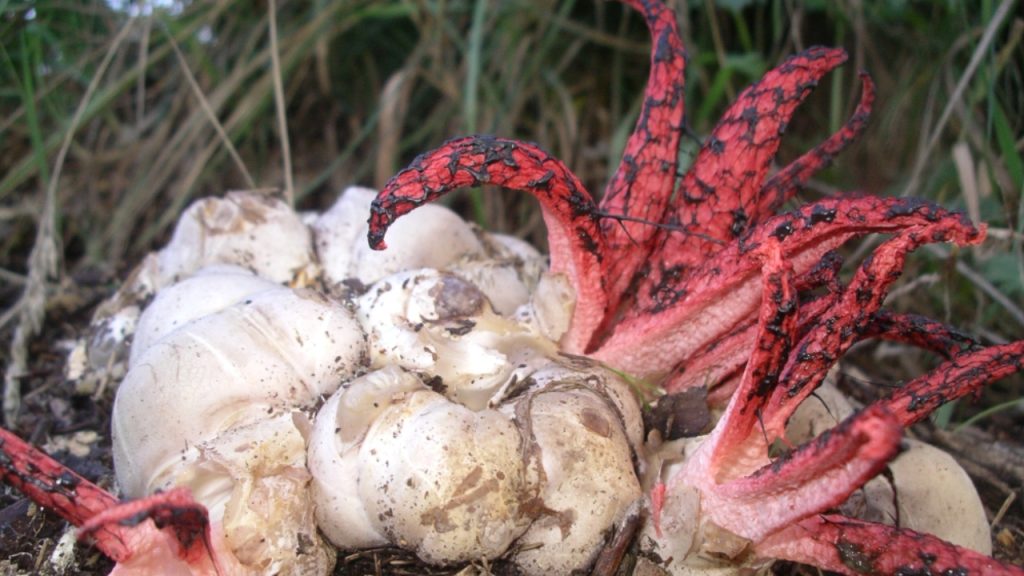
This alien-looking fungus bursts out of an egg-like sac with bright red, tentacle-like fingers that stretch outward. The fingers are covered in a dark, smelly goo that attracts flies, which then spread the spores. Native to Australia, Devil’s Fingers has slowly spread to other parts of the world, surprising anyone who stumbles across its eerie form.
Bleeding Tooth Fungus (Hydnellum peckii)
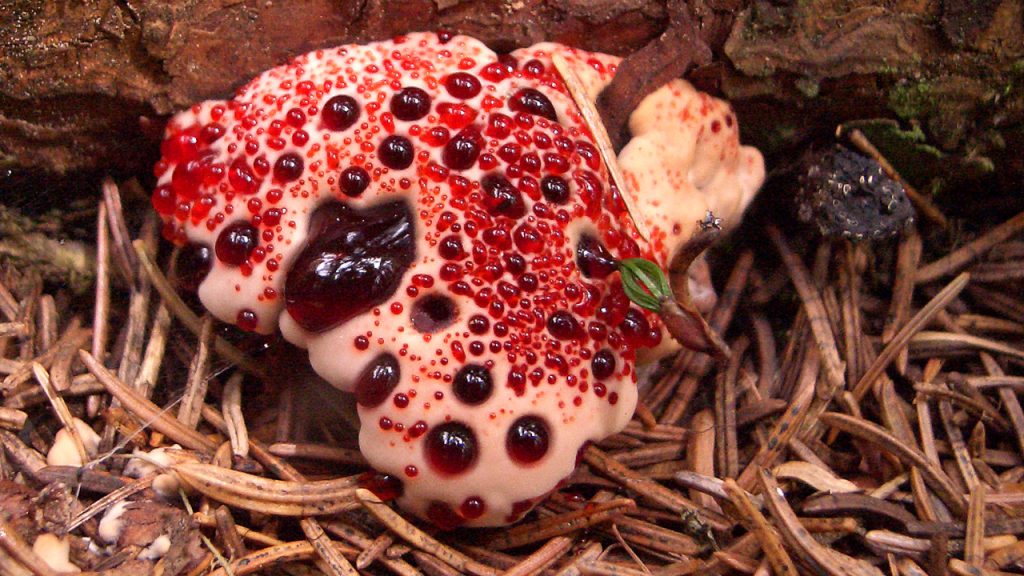
This fungus looks like something out of a horror movie, with bright red droplets of fluid oozing out from its white, tooth-like surface. The “blood” is actually a pigment, and while it might look alarming, the Bleeding Tooth Fungus is not harmful. It’s found in North America and Europe, growing in symbiosis with coniferous trees.
Bioluminescent Mushroom (Mycena chlorophos)
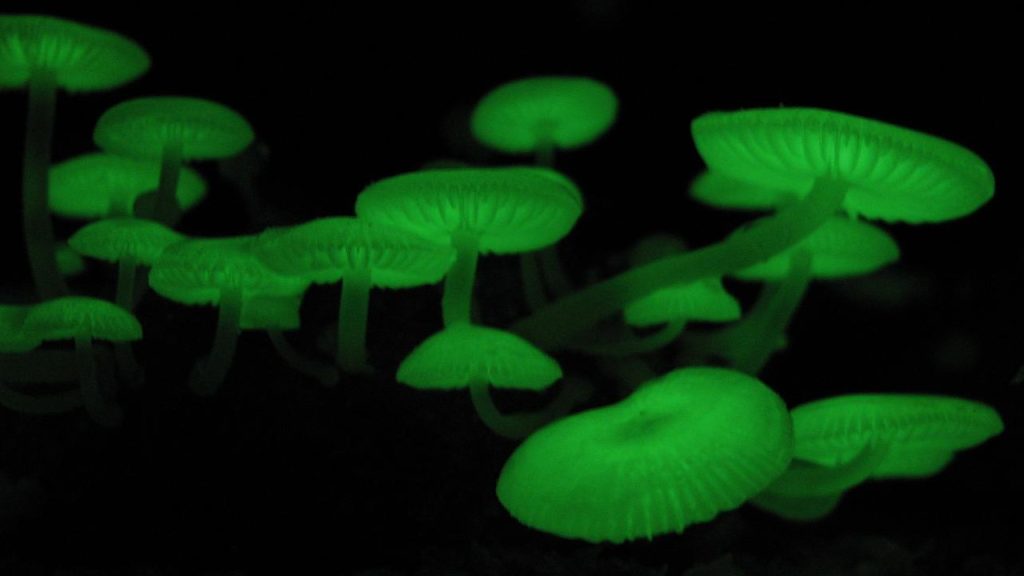
Mycena chlorophos is a small mushroom that glows a soft greenish light in the dark. Found in tropical and subtropical regions of Asia and Australia, this fungus produces its eerie glow to attract insects, which help spread its spores. Walking through a forest at night, you might just see these tiny lights dotting the forest floor, like nature’s very own fairy lights.
Veiled Lady (Phallus indusiatus)
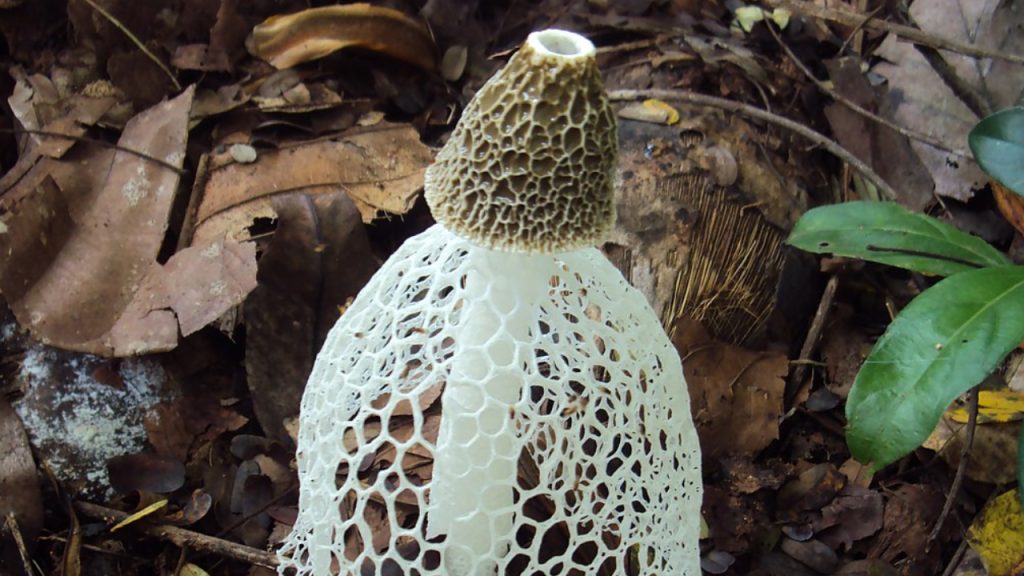
This elegant mushroom is known for the delicate lace-like veil that hangs down from its cap, almost like a bridal veil. Found in tropical regions, the Veiled Lady starts as an egg before growing into its mature form. Despite its somewhat unpleasant smell, it is considered a delicacy in some cultures and is even believed to have medicinal properties.
Dead Man’s Fingers (Xylaria polymorpha)
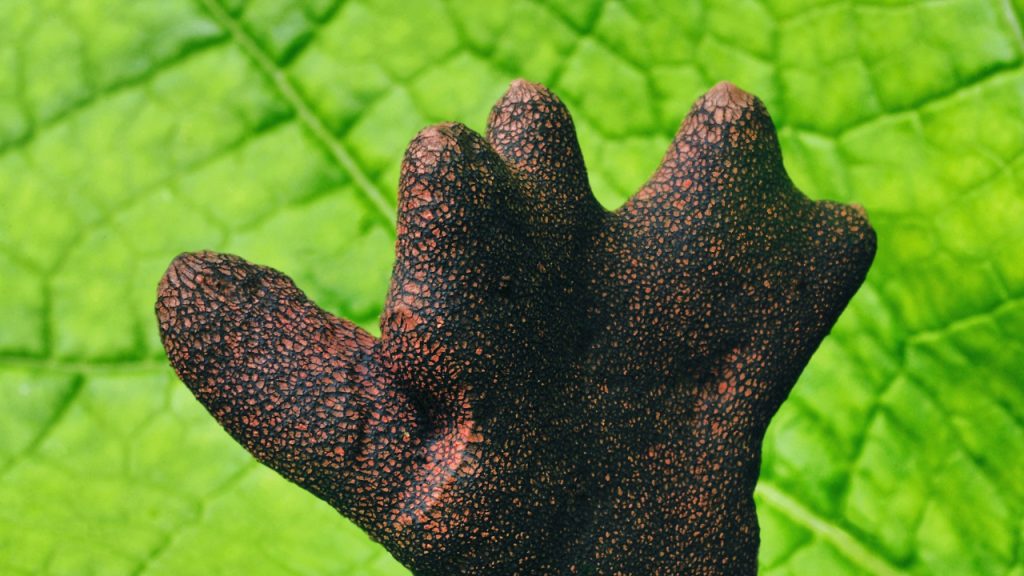
Dead Man’s Fingers is as creepy as it sounds. This fungus grows in clusters of black, finger-like structures that sprout from decaying wood. It’s found in forests across Europe and North America, often appearing in spring and summer. While it might look like something straight out of a ghost story, it’s completely harmless to humans.
Scrambled Egg Slime Mold (Fuligo septica)
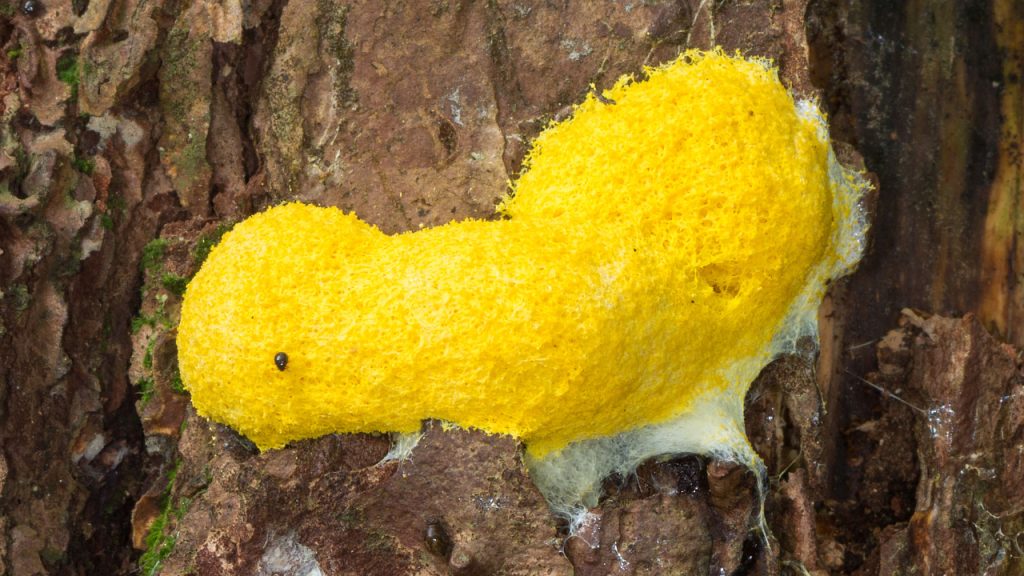
This slime mold, often mistaken for a fungus, looks exactly like what its name suggests—dog vomit. Typically yellow or orange, it forms on decaying wood or mulch and can appear almost overnight. While it might not win any beauty contests, this strange organism plays an important role in breaking down organic material.
Sky Blue Mushroom (Entoloma hochstetteri)
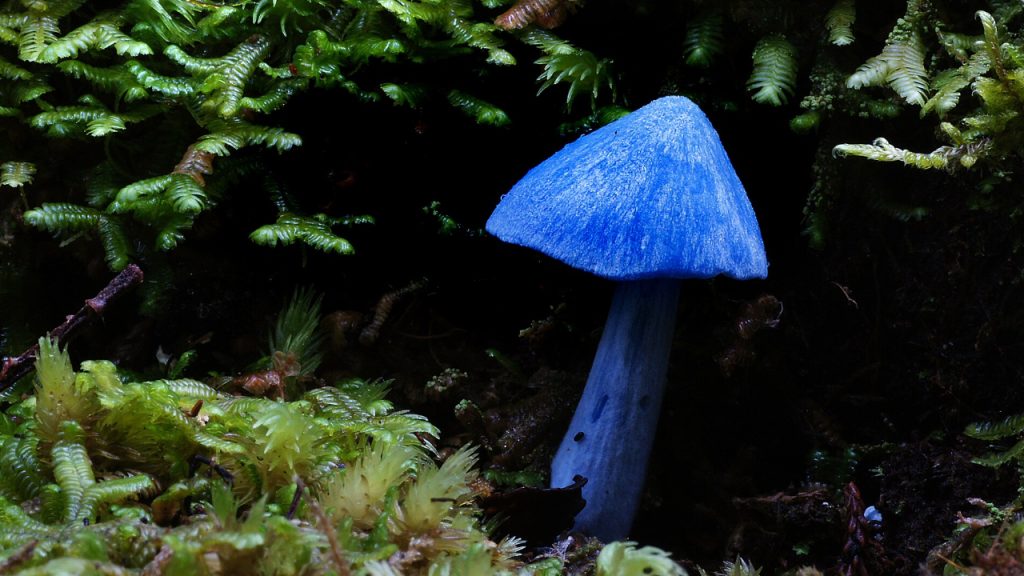
This striking mushroom is a rare beauty, with a bright blue cap and gills that stand out against the forest floor. Found in New Zealand and India, the Sky Blue Mushroom is a small but captivating fungus. It’s not just a pretty face, though—its intense color comes from unique pigments that are still being studied by scientists.
Wrinkled Peach (Rhodotus palmatus)
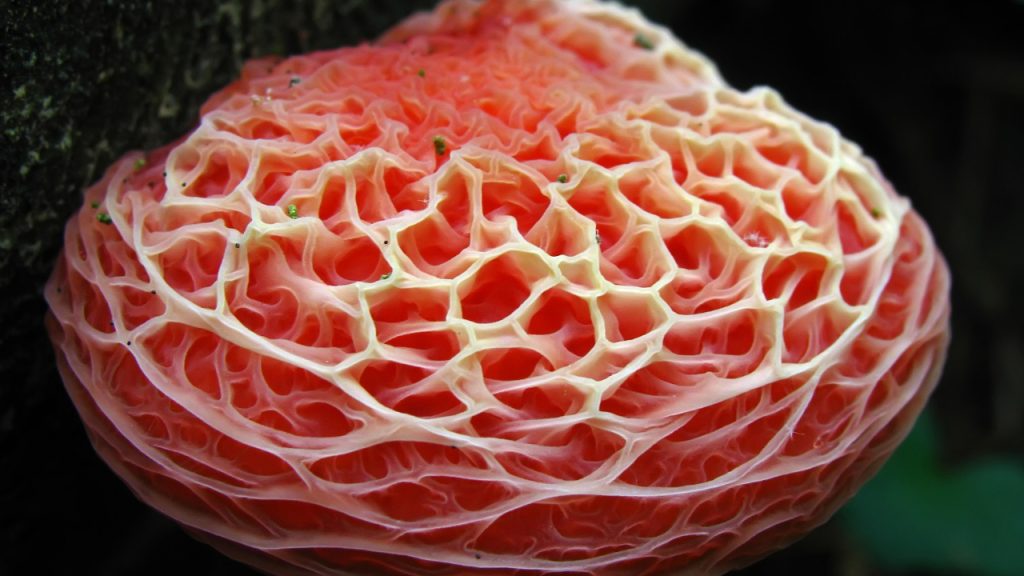
The Wrinkled Peach is a colorful fungus with a distinctive, veined surface that looks almost like the skin of a peach. It can range in color from pale pink to a deep salmon hue. Found in Europe and North America, this fungus grows on dead hardwood, often on elm trees. Its unique texture and color make it a favorite among mushroom photographers.
Coral Fungus (Clavarioid fungi)
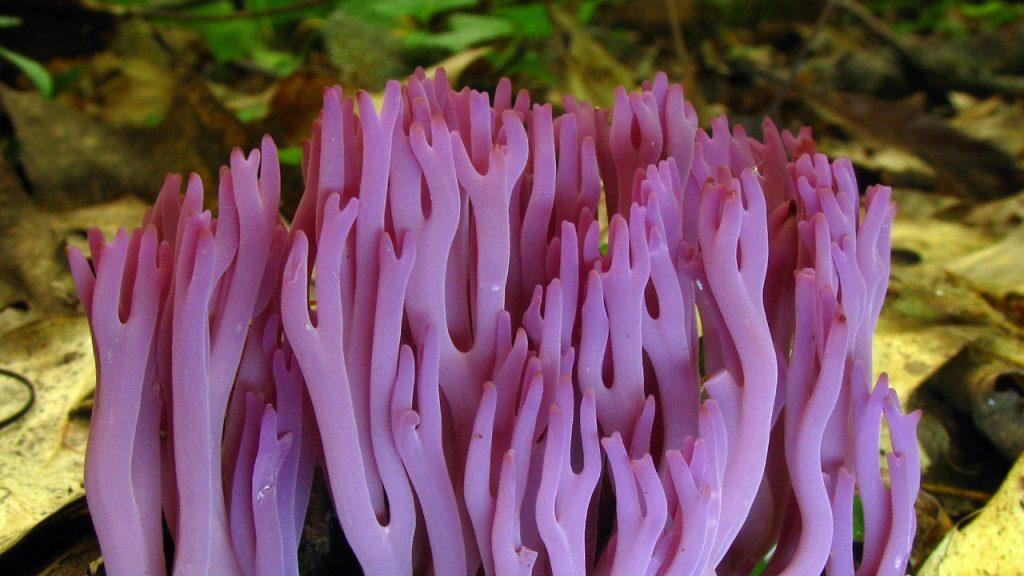
True to its name, Coral Fungus resembles underwater coral, with its branching, finger-like structures that can range in color from white to bright yellow or pink. These fungi grow on the forest floor, particularly in temperate and tropical regions. While they look like they belong in the ocean, Coral Fungi play a vital role in decomposing organic matter on land.
The False Morel (Gyromitra esculenta)
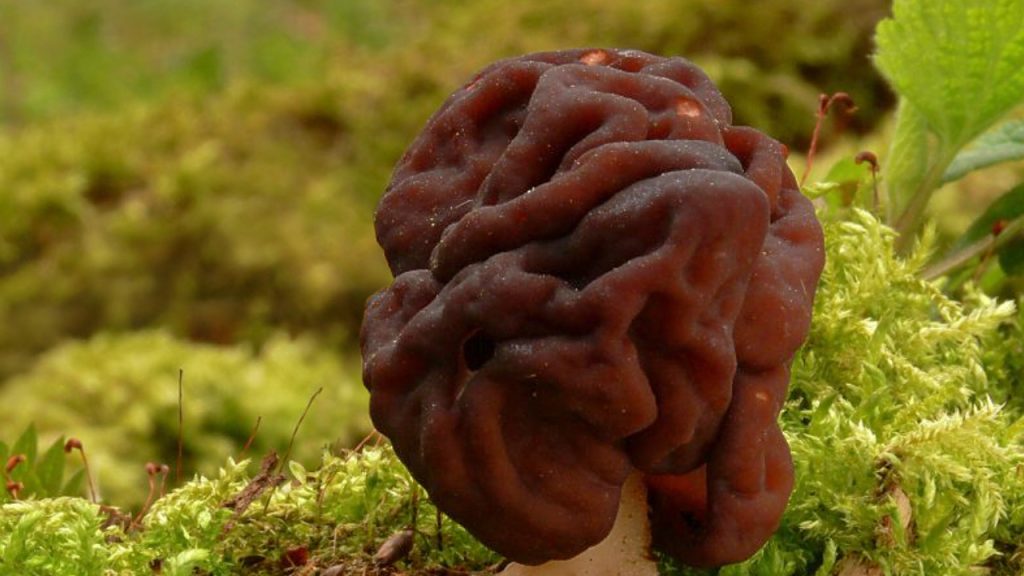
The False Morel is a strange and sometimes dangerous fungus, often mistaken for the edible and highly prized true morel. It has a wrinkled, brain-like appearance and can be found in forests across the Northern Hemisphere. While some people consume it after careful preparation, it contains toxic compounds that can be deadly if not cooked properly.
Black Witches’ Butter (Exidia glandulosa)
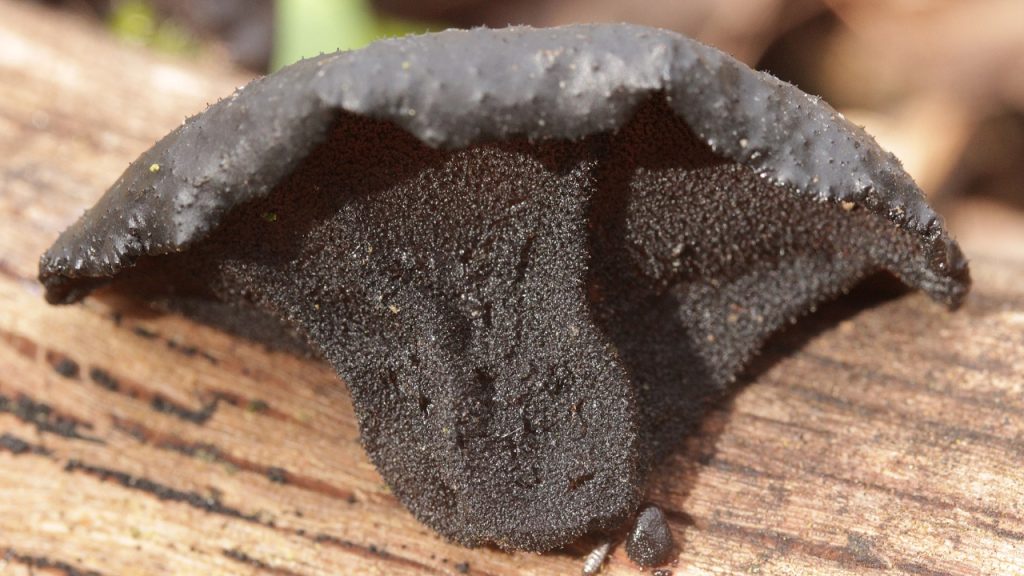
This jelly fungus looks like black blobs of goo stuck to dead trees, often appearing after rain. Found in temperate forests across the globe, Black Witches’ Butter might not look appetizing, but it has been used in traditional medicine to treat various ailments. Despite its dark and slimy appearance, it plays an essential role in breaking down dead wood.
The Amethyst Deceiver (Laccaria amethystina)
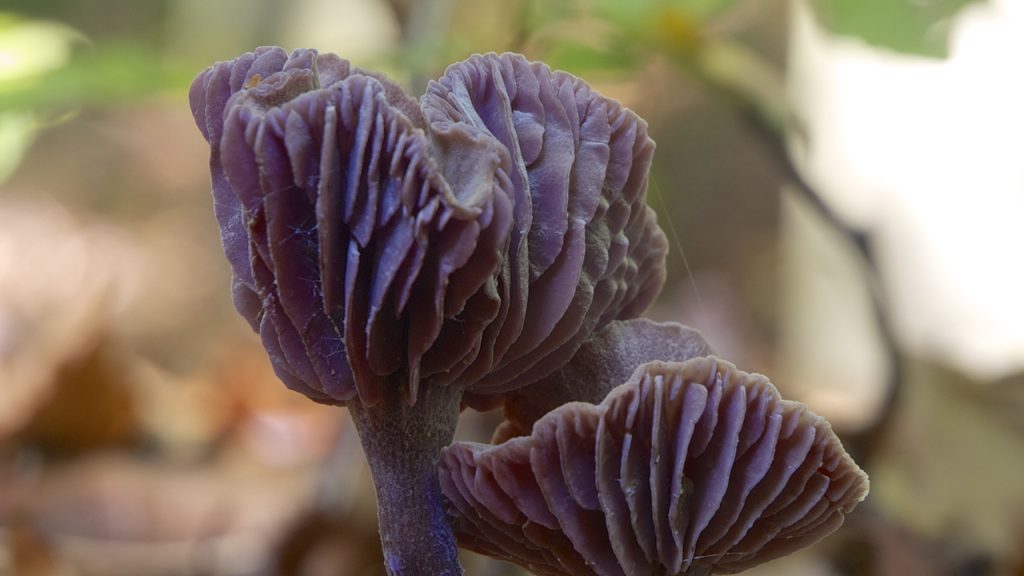
This small, purple mushroom is both beautiful and deceptive. Its vibrant color fades as it ages, making it hard to identify at times. The Amethyst Deceiver is found in forests across North America, Europe, and Asia. Despite its delicate appearance, it’s actually edible and often found by mushroom foragers.
The Brain Fungus (Tremella mesenterica)
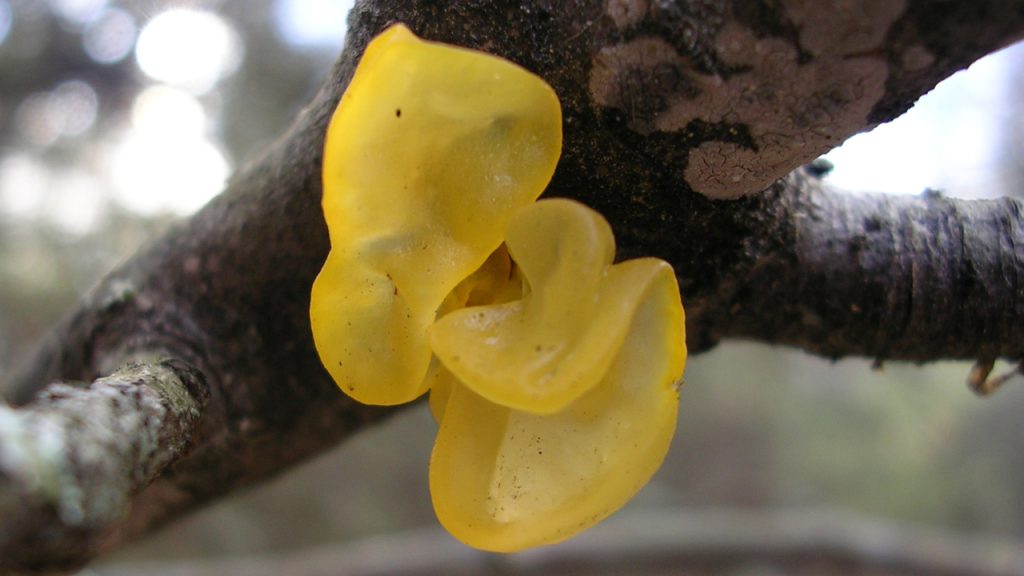
Also known as Yellow Brain or Witch’s Butter, this gelatinous fungus has a bright yellow, brain-like structure. It grows on dead branches of broadleaf trees, especially after rain. Found in various parts of the world, the Brain Fungus is often overlooked due to its small size but is hard to miss once you know what to look for.
Red Cage (Clathrus ruber)
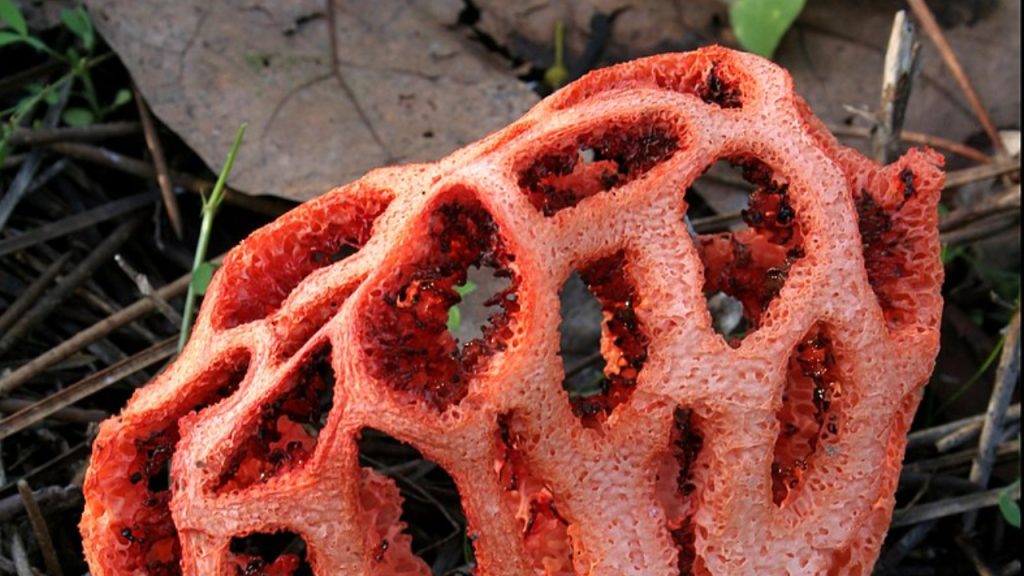
The Red Cage is one of the more bizarre-looking fungi, with a bright red, cage-like structure that emerges from an egg. Found in Europe and sometimes North America, this fungus has a strong odor that attracts insects, which help disperse its spores. Its strange appearance makes it a memorable find for those exploring forests.
The Cedar-Apple Rust Fungus (Gymnosporangium juniperi-virginianae)
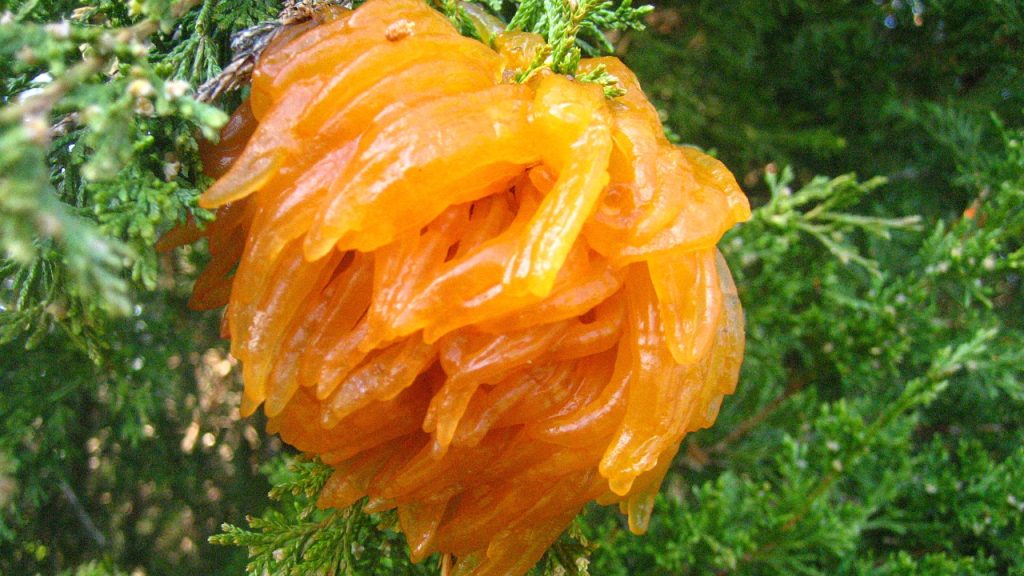
This fungus is a curious one, primarily because of the weird, gelatinous orange tendrils it produces, which look like something out of a science fiction movie. Found in North America, it requires two different host plants to complete its life cycle—junipers and apple or crabapple trees. The Cedar-Apple Rust Fungus can cause damage to both types of trees, making it a concern for gardeners.
The Collared Earthstar (Geastrum triplex)
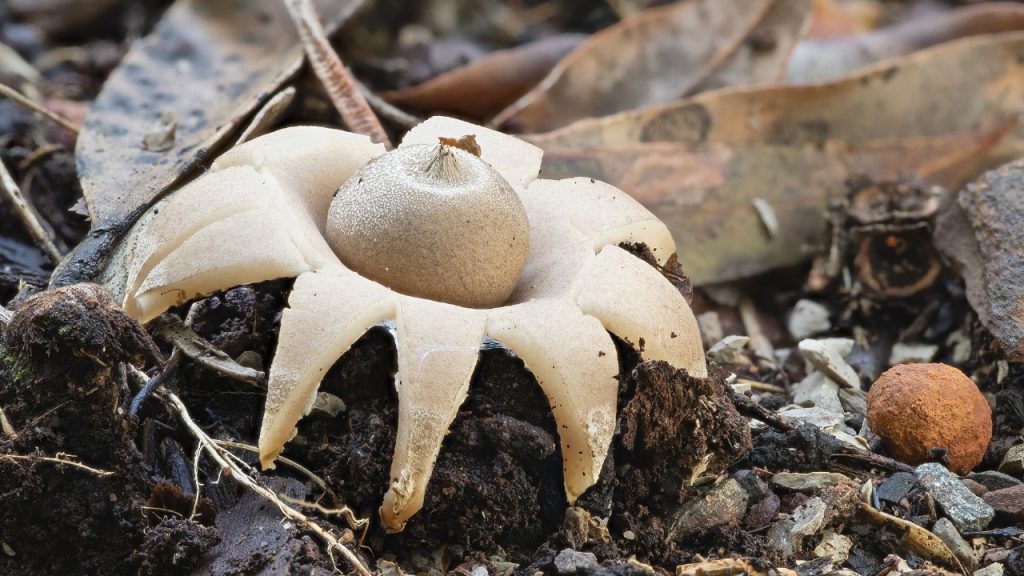
This puffball fungus is a star on the forest floor, literally. When mature, its outer layer peels back to form a star-like shape, revealing a spore sac in the center. Found in forests around the world, the Collared Earthstar is especially common in North America. When disturbed, the central sac releases a cloud of spores, ensuring the fungus’s continued spread.
The Bearded Tooth Fungus (Hericium erinaceus)
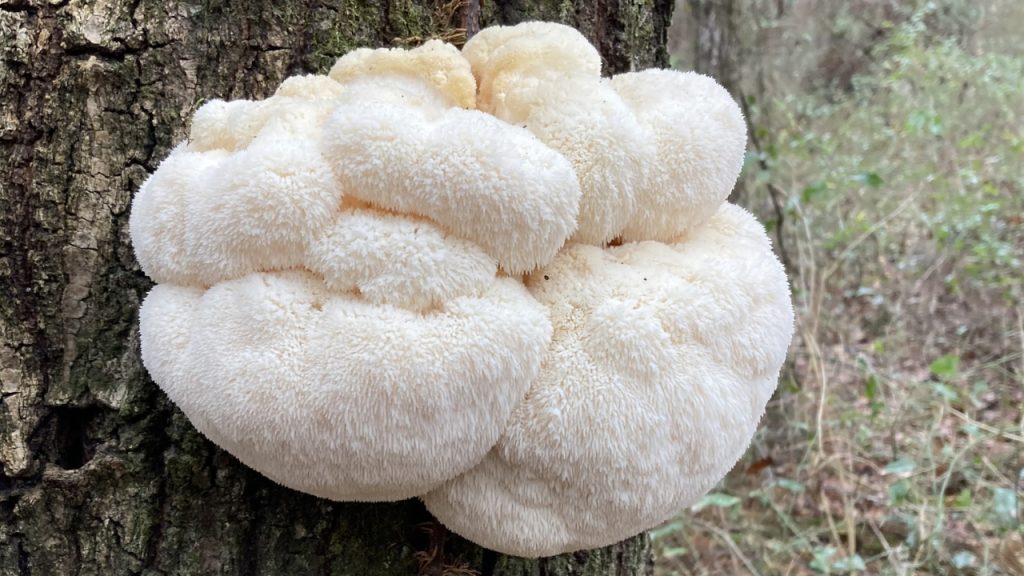
This unique fungus looks like a mass of white icicles hanging from trees. Also known as Lion’s Mane, the Bearded Tooth Fungus is found in North America, Europe, and Asia, growing on hardwood trees. It’s not just strange-looking; it’s also edible and is prized for its taste, often compared to seafood, and its potential medicinal benefits.
The Violet Crown Cup (Sarcosphaera coronaria)
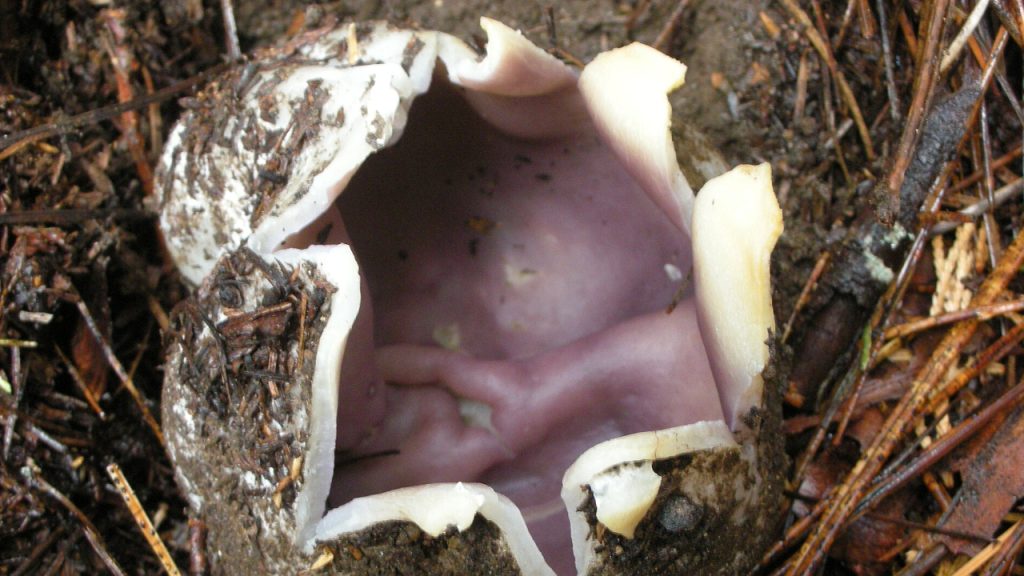
This cup-shaped fungus is a delightful surprise for those lucky enough to find it. It starts out as a purplish, ball-like structure that eventually opens into a cup. Found in forests across Europe and North America, the Violet Crown Cup is often spotted in spring. Its striking color and shape make it a favorite among mushroom hunters and photographers.
The Blue Milk Mushroom (Lactarius indigo)
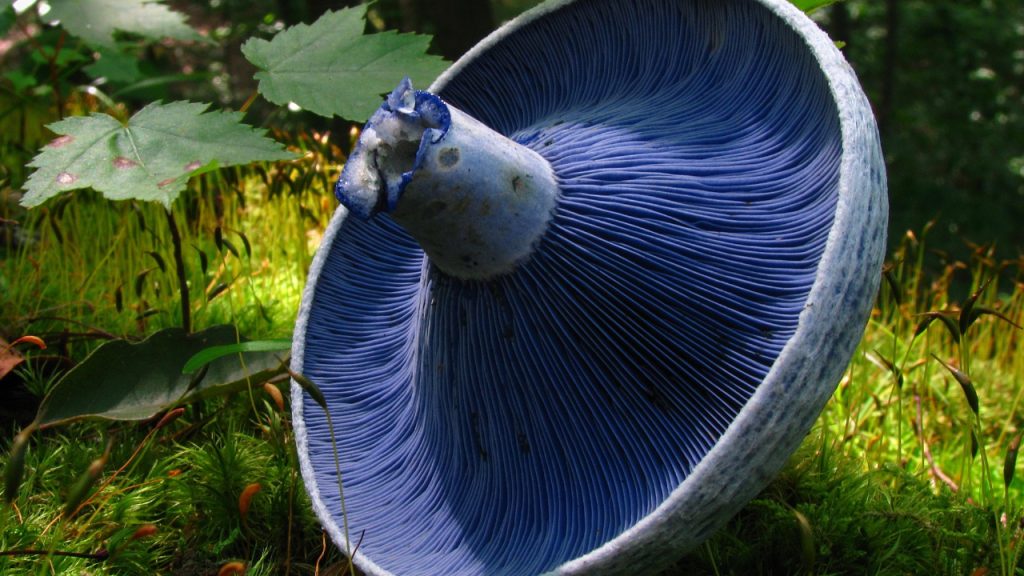
This mushroom is a deep blue color, and when cut, it bleeds a blue “milk.” Found in North America and East Asia, the Blue Milk Mushroom is not only visually stunning but also edible. Its unique color and the strange liquid it exudes make it one of the most interesting fungi in the world.
The Anemone Stinkhorn (Aseroe rubra)
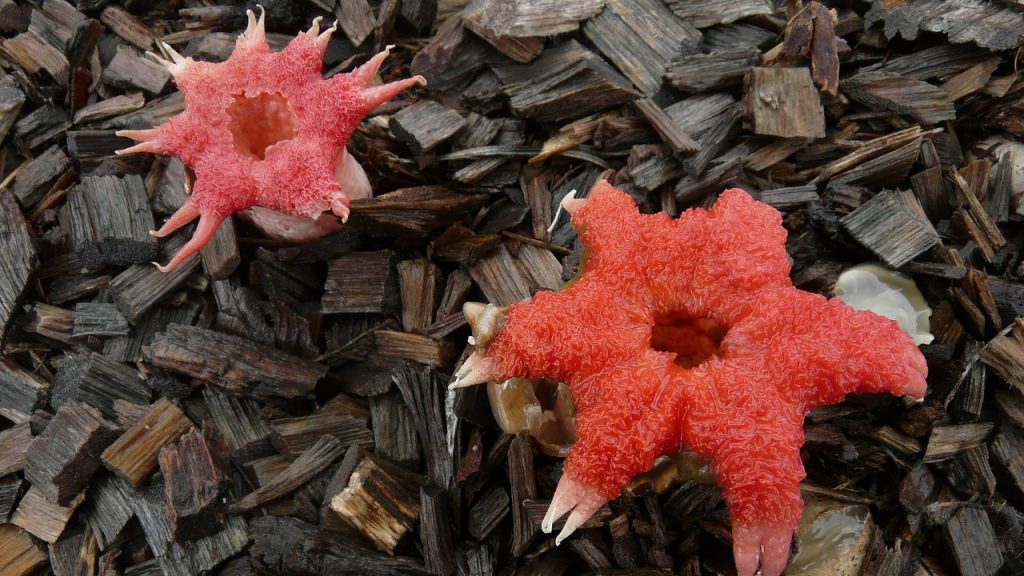
Another weird and wonderful fungus, the Anemone Stinkhorn, has a star-shaped structure with a central column that looks like a sea anemone. Found in Australia and the Pacific Islands, it’s known for its unpleasant odor, which attracts insects that spread its spores. Its bright red color and unusual shape make it a standout in the world of fungi.
The Bird’s Nest Fungus (Nidulariaceae)
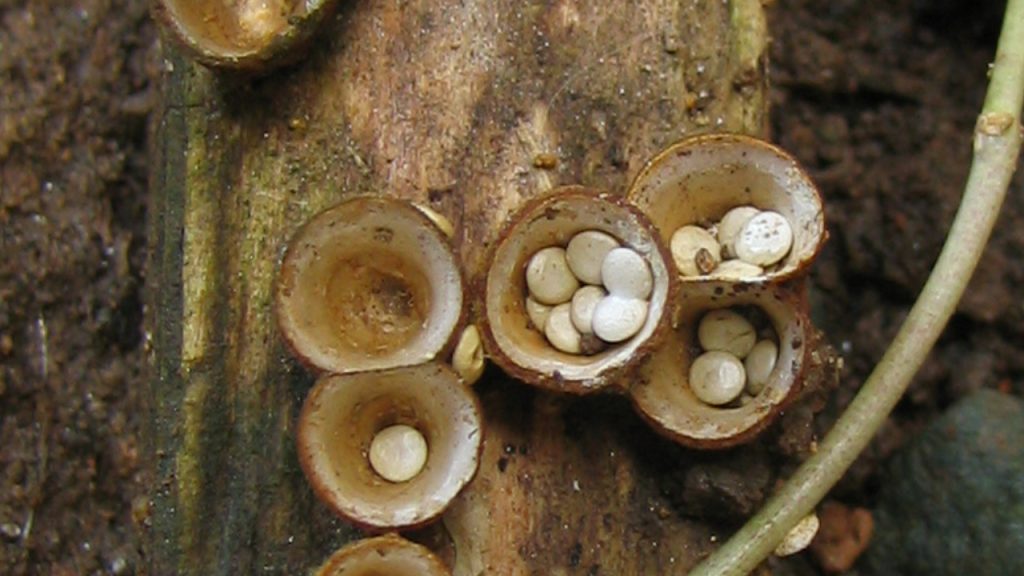
This tiny fungus looks exactly like a bird’s nest filled with eggs. The “eggs” are actually peridioles, which contain the spores. Found in various parts of the world, Bird’s Nest Fungus grows on decaying wood and plant material. When raindrops hit the nest, the eggs are splashed out, spreading the spores far and wide. Its unique reproductive strategy is just one of the many wonders of the fungal world.
12 Facts About the Adder, Britain’s Only Venomous Snake
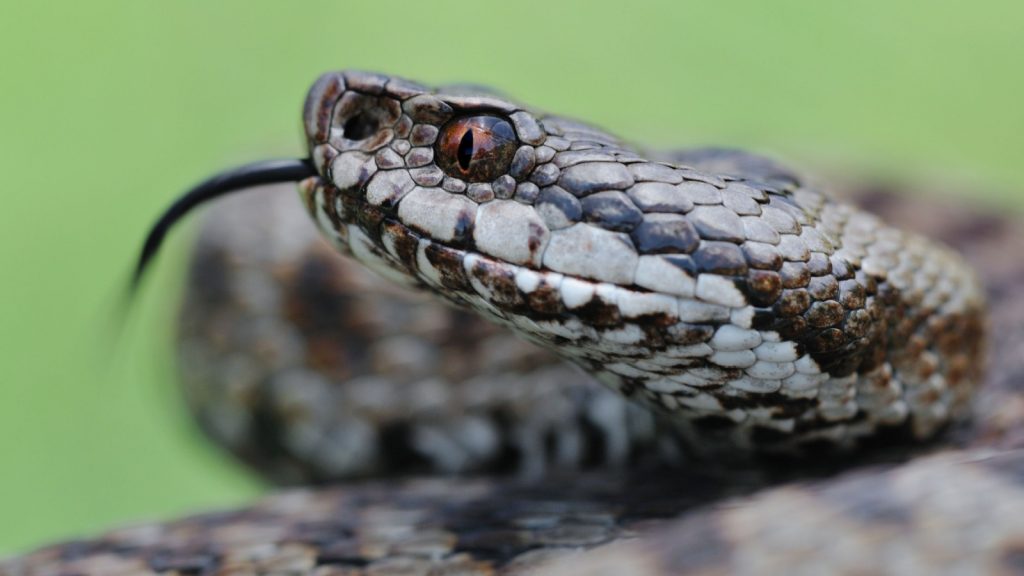
The adder, also known as the common viper, is Britain’s only venomous snake. While these fascinating creatures are often feared, they play an important role in the country’s ecosystems. Here are 12 scintillating facts about adders that will help you appreciate these misunderstood reptiles.
Read More: 12 Facts About the Adder, Britain’s Only Venomous Snake
Ellen has been obsessed with logic puzzles, jigsaws, and cryptograms since she was a kid. After learning she was taught how to play chess wrong by a family friend (so they could win), she joined her school chess club and the rest is history.


